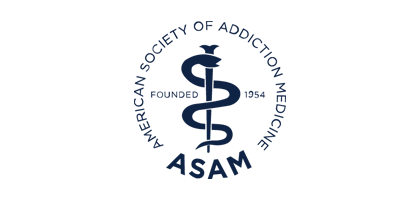News
Guest Editorial – Federal Policymakers Should Read the Drug Policy Research They've Funded
By Barbara “Basia” Andraka-Christou, JD, PhD
July 8, 2025
The federal government recently reported a stunning 27% drop in drug overdose deaths. It’s a positive omen, but it risks lulling policymakers into a false sense of accomplishment when more work must be done. Let’s not forget that overdose deaths are still unacceptably high, with tens of thousands of Americans dying each year and millions more needing evidence-based treatments. While we need further federal action to solve this crisis, not just any demand- or supply-side policies will work—they must be smart policies, informed by evidence.
Fortunately, federal policymakers need not fly blindly. The federal government has already funded millions of dollars in high-quality research to study the effects of different policies related to addiction and overdose. Unfortunately, policymakers sometimes ignore the very studies they funded. Imagine any private sector, multitrillion dollar company paying some of the best analysts to study the effects of corporate policies but then failing to read the findings. Indeed, it is wasteful for the government to ignore observations from the very studies it has funded. Below are key findings of several publicly funded studies that must be considered as the current administration and Congress seek to decrease overdose deaths.
First, on the supply side, incarceration for low-level drug dealing is expensive and largely ineffective at preventing a return to selling drugs. Taxpayers pay approximately $42,000 per person annually to incarcerate people for low-level drug dealing, but low-level dealers are easily replaced and their drug dealing often continues upon release, in part because many low-level dealers sell drugs to support their own substance use disorder (SUD). In short, the return on investment for incarcerating low-level drug dealers is often not even zero—it is negative. In contrast, addiction treatment prevents future criminal behavior, including burglaries and theft related to substance use. The return on investment for incarcerating high-level dealers might be better, but only 11% of people incarcerated for federal drug crimes are high-level dealers.
Second, diverting people with SUD to treatment (instead of incarceration for drug possession for personal use) saves taxpayer money and allows law enforcement to reallocate limited resources more effectively. Diversion programs include drug courts as well as programs allowing people to avoid arrest if they complete evidence-based treatment. SUD treatment results in $7 saved for every $1 spent incarcerating people with SUD. Diversion is not only fiscally responsible, but helps people avoid criminal records that serve as strong barriers to becoming productive, tax-paying, employed citizens.
On the demand side, SUD treatment can save lives—but not all SUD treatment is effective. Ineffective treatment can be more deadly than no treatment at all—particularly if the person loses tolerance and returns to drug use. There is no doubt that methadone and buprenorphine—FDA-approved medications—are the gold standard for treating opioid use disorder (OUD), cutting the risk of death by 50%. While all states license SUD treatment facilities to some extent, few require these facilities to provide evidence-based treatments, such as methadone or buprenorphine for OUD. Nationally, only half of outpatient SUD treatment facilities and 40% of residential facilities offer methadone or buprenorphine. Policymakers should mandate providing or connecting patients with OUD to evidence-based treatment as a condition of government funding.
Relatedly, drug policy researchers have long argued for cutting onerous federal methadone treatment regulations that limit treatment access. The US is fighting a 21st century synthetic drug crisis using regulations based on a clinic model from the 1970s, which only allows the direct dispensing of methadone from siloed “opioid treatment programs” (OTPs). OTPs only exist in 20% of US counties. New OTPs are difficult to open, reflecting onerous bureaucratic requirements for operating one, as well as state and local zoning restrictions. Instead, allowing states to be the primary regulators of the practice of medicine using methadone, including through prescribing by qualified clinicians and administration and dispensing at local pharmacies, would dramatically improve access to this lifesaving treatment, all while eliminating unnecessary federal bureaucracy.
People are increasingly using both opioids and stimulants, necessitating treatment for both substances. Contingency management is the gold standard treatment for stimulant use disorder (StUD), and it can be effectively combined with methadone or buprenorphine treatment. Contingency management can involve paying people for negative urine drug screens. While some may balk at the concept, contingency management is more cost effective than “usual treatment” for people with stimulant use, even before considering broader societal implications of decreased drug use, such as fewer justice system or child welfare involvements. Contingency management is, unfortunately, severely underfunded and misunderstood. Federal action is needed so that more clinicians can provide contingency management without running afoul of anti-kickback laws and anti-patient-inducement laws.
A large body of publicly funded research has examined Medicaid for SUD treatment. Medicaid is among the most important policy tools for addressing the overdose crisis, because when more people have Medicaid coverage, more people get SUD treatment. For example, Medicaid expansion led to a 70% higher rate of buprenorphine prescriptions for people with OUD. Medicaid expansion, not surprisingly, also decreases opioid-related hospital visits, likely due to increased use of OUD treatment. Timely use of SUD treatment decreases overall health care costs in the Medicaid population for up to three years. In contrast, delays in Medicaid re-enrollment, as opposed to automatic re-enrollment, decrease buprenorphine treatment utilization.
In short, Americans suffering from SUD and families who have lost loved ones deserve evidence-based policymaking. A very large body of research exists to guide policymakers seeking to address the ongoing SUD and overdose crisis. Policymakers must set aside ideology and preconceptions and read the findings of the research they have funded.
*Barbara "Basia" Andraka-Christou, JD, PhD is the author of The Opioid Fix: America’s Addiction Crisis and the Solution They Don’t Want You to Have.



